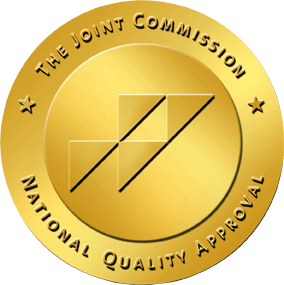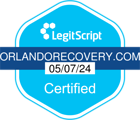If you are in an immediate emergency, call 911. If you are looking for more information on substance abuse treatment and it is not a medical emergency, call our 24/7 Xanax Helpline for admissions at 855-416-2466.
Benzodiazepines like Xanax (alprazolam) have many medical uses, but they can easily lead to abuse, dependence and addiction. More than 20 million Xanax prescriptions were written in the U.S. in 2018, making the drug one of the most prescribed anxiety medications in the country. However, one study found that over 17% of people with benzodiazepine prescriptions misuse them.
Given the sheer number of prescriptions and the high rate of benzo misuse, it is no surprise that Xanax addiction is a serious problem for many people. Fortunately, help is available through professional addiction treatment programs.
What Is Xanax?
Xanax is a benzodiazepine, a type of drug that interacts with GABA receptors in the brain. GABA receptors create a feeling of relaxation when stimulated, which plays an important role in calming the body. Xanax is often used to treat anxiety by acting on GABA receptors and causing relaxation.
Treatment Can Be Life Changing
Whether you are struggling with addiction, mental health or both, our expert team is here to guide you every step of the way. Don’t wait— reach out today to take the first step toward taking control of your life.
Street Names for Xanax
Xanax is a potentially addictive substance that can only be legally sold to people who have a prescription. Someone who is addicted to Xanax but unable to purchase it legally may turn to illicit methods of acquiring the drug.
As a street drug, Xanax has many street names used by those who sell or use it illegally. These names include:
If you are in an immediate emergency, call 911. If you are looking for more information on substance abuse treatment and it is not a medical emergency, call our 24/7 Xanax Helpline for admissions at 844-461-3675.
Benzodiazepines like Xanax (alprazolam) have many medical uses, but they can easily lead to abuse, dependence and addiction. More than 16 million Xanax prescriptions were written in the U.S. in 2020, making the drug one of the most prescribed anxiety medications in the country. However, one study found that over 17% of people with benzodiazepine prescriptions misuse them.
Given the sheer number of prescriptions and the high rate of benzo misuse, it is no surprise that Xanax addiction is a serious problem for many people. Fortunately, help is available through professional addiction treatment programs.
Addiction to Xanax
Xanax is a benzodiazepine, a type of drug that interacts with GABA receptors in the brain. GABA receptors create a feeling of relaxation when stimulated, which plays a vital role in calming the body. Xanax is often used to treat anxiety by acting on GABA receptors and causing relaxation.
While Xanax is used for many medical purposes, it can also be misused. Xanax causes chemicals like dopamine to be released in the brain. Dopamine has many uses in the brain but can be used by the brain as a reward to reinforce beneficial behaviors. This can lead to changes in the brain that encourage you to continue the behaviors that release dopamine. This is how a Xanax addiction develops.
Xanax addiction, which is potentially dangerous because the drug can cause a fatal overdose when too much is used. Excessive Xanax use can cause a person’s body to relax so much that the person stops breathing adequately, leading to a fatal overdose.
While there are dangers to using Xanax, the drug can also lead to dangerous withdrawal symptoms. Many recreational drugs cause unpleasant withdrawal effects, but Xanax withdrawal can actually lead to seizures because it reduces the brain’s ability to suppress them. Seizures can be fatal in some cases or lead to brain damage, making Xanax addiction particularly dangerous.
How Addictive Is Xanax?
Xanax is a Schedule IV controlled substance, meaning that it has some potential for addiction. As a class, benzodiazepines in general, have addictive properties, but Xanax can be particularly dangerous. In fact, alprazolam (the generic name for Xanax) is responsible for more emergency department visits per prescription than the next three most commonly prescribed benzodiazepines.
Xanax is absorbed in the body within an hour or two, so it can cause considerable changes in the brain in a short period of time. Addiction is risky with higher doses and longer periods of use, but anyone who uses the drug in a way not prescribed by a doctor is at risk for addiction.
Xanax Abuse Statistics
- Over 16 million alprazolam (generic name for Xanax) prescriptions were issued in the United States in the year 2020.
- According to the 2015–16 National Survey on Drug Use and Health, 5.3 million adults in the U.S. misused benzodiazepines. Misuse accounted for 17.2% of all use.
- In 2016, Xanax pills mixed with fentanyl killed nine people near St. Petersburg and Clearwater, Florida.
- In 2020, 93% of fatal benzodiazepine overdoses also involved an opioid.
What Does Xanax Look Like?
Xanax can have many different appearances. One tablet may vary from another based on:
- The dosage
- Whether it is immediate-release or extended-release
- Who the manufacturer of the pill is
Because Xanax manufacturers and the types of pills used can change, it is best to look up specific pills using a pill identifier to determine if they are Xanax. It’s also important to note that taking a drug you are uncertain of can be incredibly dangerous. Those who sell drugs illicitly can use readily available references to make a substance look like Xanax. If you are not purchasing medication from a pharmacy, there is always a risk that you may be taking something more dangerous than Xanax.
Street Names for Xanax
Xanax is a potentially addictive substance that can only be legally sold to people who have a prescription. Someone who is addicted to Xanax but unable to purchase it legally may turn to illicit methods of acquiring the drug.
As a street drug, Xanax has many street names used by those who sell or use it illegally. These names include:
- Bars
- Benzos
- Blue Footballs
- Bricks
- Upjohn
- Zanbars
- Z-Bars
Mixing Xanax and Alcohol
The GABA receptors that Xanax acts on are also affected by alcohol, another commonly abused substance. While the effect that Xanax and alcohol have on GABA receptors differs somewhat, there are some similarities that make combining these two substances dangerous. Each can potentiate the effect of the other and slow the body’s ability to eliminate the two substances combined. This can increase the risk of overdose or other serious health problems that occur when using alcohol or Xanax.
Signs and Symptoms of Xanax Abuse
Xanax addiction symptoms can involve general signs of addiction as well as symptoms specific to Xanax use.
Signs of addiction are typically related to behavior changes and may include:
- Thinking or obsessing about Xanax constantly
- Declining performance at work, home or school
- Changing appetite or sleep patterns
- Unexplained behavioral changes
- Neglect of appearance, hygiene or responsibilities
- Secretive or dishonest behaviors
- New legal or financial problems
Symptoms of Xanax use itself can include:
- Slurred speech
- Fatigue or excessive sleepiness
- Sluggishness
- Nausea or vomiting
- Constricted pupils
- Dry mouth
- Confusion
- Cognitive changes
- Difficulty holding a conversation
Signs of Xanax use may also include Xanax withdrawal symptoms like irritability, flu-like symptoms and seizures.
Effects of Xanax Addiction
Xanax addiction can have a number of serious consequences that can affect every aspect of someone’s life. Oftentimes, people struggling with Xanax misuse think they have everything under control, but sooner than later, serious, even devastating, consequences begin to manifest.
Behavioral Effects
Xanax addiction can have a number of serious behavioral, including:
- Loss of interest in former daily activities and hobbies
- Social isolation by withdrawing from friends and family
- Risky, impulsive behavior, whether as an effect of the drug or to acquire more Xanax
Physical Effects
Physical consequences of Xanax addiction include:
- Persistent fatigue, drowsiness and sluggishness
- Impaired coordination and motor skills
- Slurred speech
- Increasing tolerance that requires more and more Xanax
- Cravings that can sometimes feel overwhelming
Psychological Effects
As a fast-acting benzodiazepine, Xanax addiction can have serious effects on the brain and an individual’s psychological wellness:
- Memory impairment, including difficulty remember details
- Mood swings with frequent ups and downs, including strong manic moods
- Difficulty concentrating, with or without the Xanax
- Heightened anxiety, despite Xanax’s original intended effect to treat anxiety
Long-Term Effects
Misusing Xanax chronically over a sustained period of time:
- Cognitive decline, including impaired decision making and decreased brain function
- Measurable decline in problem-solving and ability to focus
- Motor vehicle accidents
- Fracture risk
- High risk of overdose
Xanax Overdose
Ingesting an excessive amount of Xanax can lead to toxicity and overdose. The risk of Xanax overdose is especially pronounced when the drug is combined with other substances like opioids or alcohol.
Xanax overdose can be very serious and can result in death. As a central nervous system (CNS) depressant, taking too much Xanax can slow an individual’s breathing to the point of respiratory arrest. A lack of oxygen flowing to the brain can result in coma, brain damage and, ultimately, death.
When too much Xanax is used, a person can experience an overdose. This can result in severe fatigue and inhibit the ability to breathe correctly. If you suspect someone is overdosing on Xanax, you should immediately call 911.
Xanax Addiction Withdrawal and Detox
Serious withdrawal symptoms can occur after sustained periods of taking Xanax, especially at amounts beyond what is prescribed. The severity of withdrawal depends on a number of variables, including:
- Frequency of Xanax use
- Dosage of Xanax regularly consumed
- Duration of Xanax use
- Use of other substances
- Overall physical and mental wellness
Xanax Withdrawal Symptoms
Xanax withdrawal symptoms may include:
- Seizures
- Psychosis, including hallucinations, delusions, and delirium (a type of severe confusion)
- Tremors
- Hyperventilation
- Panic attacks
- Anxiety
- Muscle spasms
- Sweating
- Insomnia
- Loss of appetite
- General discomfort
- Hypersensitivity to light, sound, or touch
- Abnormal sensations
Remember that these withdrawal symptoms can be acute and severe. If you are experiencing withdrawal symptoms from Xanax addiction, it is imperative that you seek medical attention.
Xanax Withdrawal Timeline
Withdrawal symptoms from Xanax addiction can vary in duration based on the same factors for withdrawal severity. In most cases, withdrawal from Xanax addiction begins within 24 hours and lasts up to a few weeks.
- Day 1: Withdrawal symptoms will begin often within 6–8 hours of the last Xanax dose and nearly always within 24 hours.
- Days 2–7: Withdrawal symptoms will likely peak during this time. Cravings will be intense, and severe symptoms will likely manifest. In some cases, the severity of withdrawal symptoms can taper toward the end of the first and beginning of the second week.
- Week 2: Acute withdrawal symptoms may still linger, but the most severe manifestation of Xanax withdrawal symptoms will have likely passed.
- Weeks 3–6: Symptoms may continue at varying levels of severity, but most individuals will be well past peak. The severity of withdrawal at this stage will fluctuate greatly depending on the stability of the individual and the treatment and care (or lack thereof) they have received up until this point.
- Weeks 6 and beyond: Symptoms may persist, but most individuals will have moved past the most difficult period of withdrawal and will primarily need to deal with relapse triggers.
How Long Does Xanax Stay in Your System?
Xanax has a half-life of 11.2 hours, meaning it takes 11.2 hours for the amount of Xanax in an average person’s bloodstream to be reduced by half. Two half-lives (22.4 hours) would reduce the Xanax amount to 25% of the initial dose. It takes multiple half-lives to bring the amount of Xanax down to a negligible level.
The half-life of Xanax will be different for everyone based on individual factors like:
- Gender
- Age
- Weight
- Health
- Other medications used
It’s important to note that extended-release Xanax will slowly raise the levels of Xanax in your bloodstream for several hours, making it remain in your system longer.
While a single dose of Xanax will stop affecting you within several hours, it can be detectable in urine for several days and detected in hair for up to 90 days.
Xanax Detox
Medical detox for Xanax can be an important step in helping you through withdrawal. Withdrawal can be an exceptionally difficult process, and it may even prove downright dangerous. Receiving medical care during the withdrawal and detox process ensures that you are set up for maximum success as you begin your journey toward a Xanax-free life.
In a medical detox for Xanax addiction, medical professionals will provide supervision and round-the-clock care for withdrawal symptoms to make ridding your body of the drug as safe and comfortable as possible. At Orlando Recovery Center, we’ll assess the specifics of your situation and custom-tailor a treatment plan, including medication-assisted treatment if necessary, to help you through withdrawal.
Xanax Addiction Treatment
Xanax addiction doesn’t have to control your life. There are many options for treatment available. A professional Xanax addiction treatment center can help you safely clear the drug from your system through a process called detox. Afterward, you can transition into a rehabilitation program that helps you learn how to live a healthier, Xanax-free life.
Inpatient Xanax Addiction Rehab
Inpatient rehab for Xanax addiction, often referred to as residential treatment, is an intensive, structured addiction treatment program that allows you to focus completely on your recovery.
- Has Xanax use had a significant impact on your life?
- Would getting away from triggers in your current environment help you recover?
- Do you ever feel like if you could just “get away from it all,” you could get better?
If you answered yes to any of these questions, then inpatient rehab may be the best option for you. At Orlando Recovery Center, you’ll receive evidence-based care, tools and resources that will support you in a Xanax-free life. When you’re ready to do whatever it takes to overcome Xanax addiction, inpatient rehab may very well be the best option for you.
Outpatient Xanax Addiction Rehab
Outpatient rehab provides care, resources, and support for Xanax addiction but on a much more flexible schedule.
- Have you completed inpatient care and are seeking additional support?
- Do you have support from loved ones and a safe home environment?
- Is it possible that your Xanax addiction is a mild substance use disorder?
If so, then outpatient rehab or your Xanax misuse may be an option for you.
Keep in mind, though, that while Orlando Recovery Center offers you whatever support we can, you must take full responsibility for your sobriety when not in appointments. If that’s not something you are absolutely sure you can commit to, you may want to consider inpatient rehab first and then move to outpatient care once you have successfully completed more rigorous treatment.
Xanax Rehab Aftercare
Treatment or Xanax addiction doesn’t end with rehab. Recovery from addiction is a lifelong journey. Relapse is a reality every person in recovery must contend with, and aftercare for Xanax addiction is a proven way to stay motivated, find support in community and avoid relapse.
In aftercare, you’ll continue to learn strategies for coping in everyday life, and we’ll also help you pursue personal and professional goals. You’ll receive much-needed accountability, and we’ll help you commit to a healthy lifestyle that will keep you Xanax-free for the long term.
Get Help with Xanax Abuse in Orlando
The Orlando Recovery Center has extensive experience in helping those with Xanax addiction achieve lasting sobriety. If you or someone you love is ready to take the next step toward recovery, contact us today to learn about treatment programs that can work well for you.










